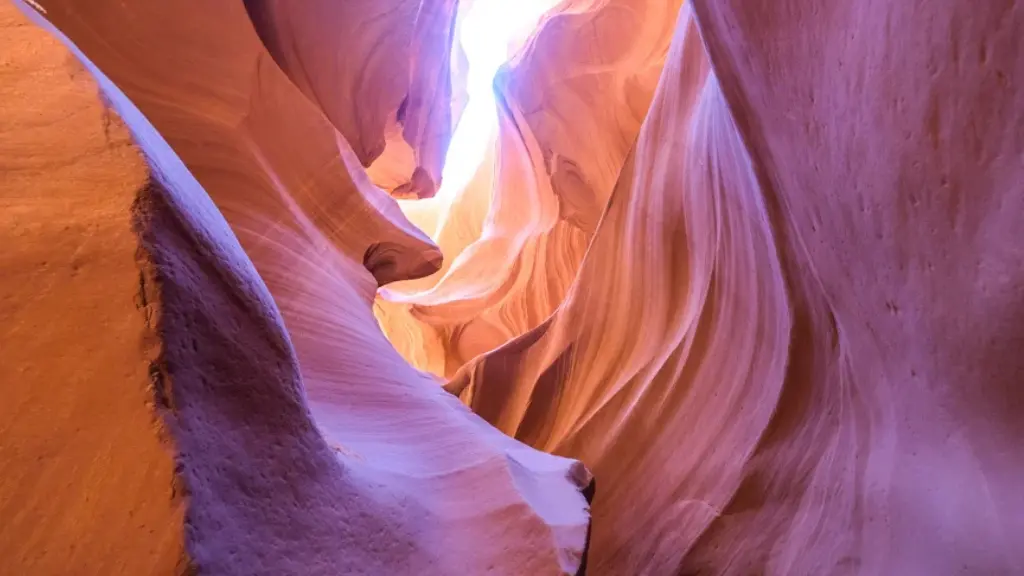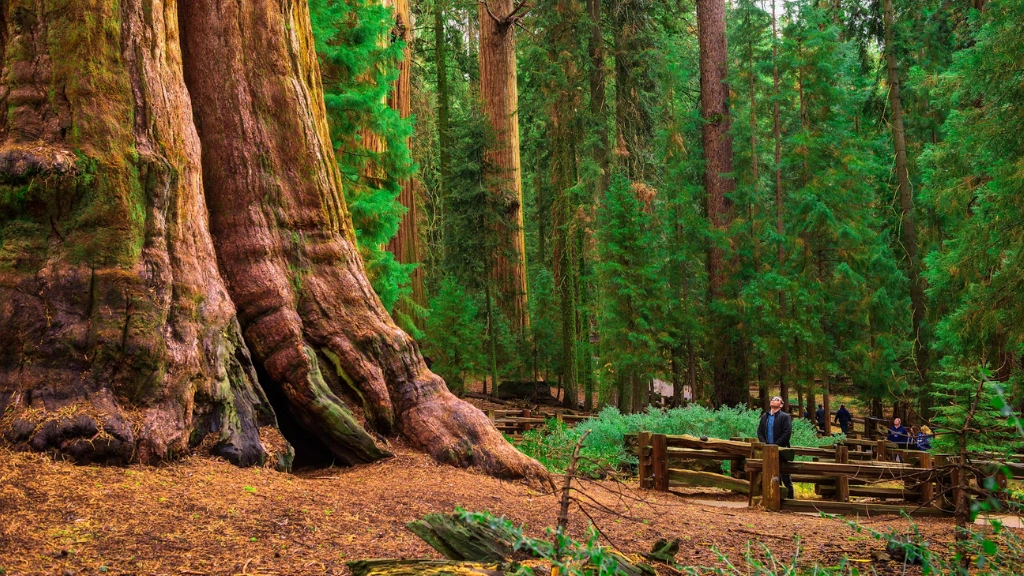Lower Antelope Canyon, located near Page, Arizona, is one of the most breathtaking natural wonders in the American Southwest. Carved over millennia by flash floods, this slot canyon features narrow passageways, twisting rock formations, and vibrant colors that seem to change throughout the day.
Unlike the more famous Upper Antelope Canyon, Lower Antelope Canyon offers a slightly more adventurous experience with ladders and narrower spaces to navigate. Here’s everything you need to know about taking a Lower Antelope Canyon tour.
You May Also Like: How to Spend 1 Day in Yosemite National Park: Perfect Itinerary
What is Lower Antelope Canyon?
Lower Antelope Canyon, also known by its Navajo name Hazdistazí (meaning “spiral rock arches”), is part of the larger Antelope Canyon system located within the Navajo Nation. The canyon is made up of sandstone formations that have been naturally shaped over time, creating smooth, wave-like walls. These walls often glow in shades of red, orange, and purple, making it a dream destination for photographers and nature lovers alike.
How to Get to Lower Antelope Canyon
Lower Antelope Canyon is located about 4 miles east of Page, Arizona, and is easily accessible by car. If you’re coming from major cities:
- From Las Vegas: It’s approximately a 4.5-hour drive northeast via I-15 and US-89.
- From Phoenix: Expect a 4-hour drive north via US-89.
- From the Grand Canyon: It’s about 2 hours by car, making it a popular day trip option.
Tip: Parking is available at both tour company locations just outside the canyon entrance. Make sure to follow signs for Lower Antelope Canyon tours as Upper Antelope Canyon has separate tour operators.
Booking Your Lower Antelope Canyon Tour
To visit Lower Antelope Canyon, you must book a guided tour through one of the licensed tour companies. The canyon is located on Navajo land, and only authorized guides are allowed to lead visitors through the area.
Two main companies offer tours:
- Ken’s Tours
- Dixie’s Lower Antelope Canyon Tours
Both companies provide similar experiences, and tours typically last about 75 minutes. Due to the popularity of Lower Antelope Canyon, it’s recommended to book your tour at least a few weeks in advance, especially during peak seasons (spring and fall).
Tour Prices:
- Prices for adult tickets range from $40 to $50, with additional fees for Navajo permits. Children’s tickets are slightly cheaper.
Tip: The earlier you book, the better, as tours often sell out months in advance, especially for the most popular time slots when the light inside the canyon is at its best.
Best Time to Visit Lower Antelope Canyon
The best time to visit Lower Antelope Canyon is during the middle of the day when the sunlight streams directly into the canyon, creating the famous light beams that photographers love. This typically occurs between 10 a.m. and 1 p.m..
If you’re a photographer, it’s worth considering a mid-day tour to capture the light beams, although these tours are usually more expensive and fill up quickly. Visiting outside of these hours is also great if you prefer fewer crowds.
What to Expect on Your Tour
Visiting Lower Antelope Canyon is a unique experience that blends adventure with awe-inspiring natural beauty. Here’s what to expect during your tour:
1. Entering the Canyon
The tour starts at the entrance of Lower Antelope Canyon, where your guide will give a brief overview of the canyon’s history, geology, and significance to the Navajo people. From there, you’ll descend into the canyon via metal ladders, as the entrance to Lower Antelope is lower than ground level. This is one of the main differences between Upper and Lower Antelope Canyon, as Upper Antelope has a ground-level entrance.
Tip: The ladders are sturdy but steep, so make sure to wear comfortable shoes with good grip. Hiking boots or athletic shoes are ideal.
2. Exploring the Canyon
Once inside, you’ll be walking through narrow passageways, some of which are just wide enough for one person at a time. The sandstone walls rise dramatically above you, and the natural curves and patterns created by centuries of water erosion are mesmerizing.
During the tour, your guide will point out key spots, including the famous heart-shaped rock and other interesting formations. Guides are also knowledgeable about photography and can help you find the best angles to capture the canyon’s stunning light and colors.
Tip: Bring a camera or smartphone, but avoid large backpacks or tripods as space is limited in the narrow sections.
3. Navigating the Ladders
One of the unique aspects of Lower Antelope Canyon is the series of ladders that help you navigate the canyon. These metal ladders allow you to climb up and down different levels within the slot canyon. While they are safe and well-maintained, the climb can be challenging for some, especially if you’re not comfortable with heights.
Tip: Take your time and follow your guide’s instructions when using the ladders. If you have any mobility issues, it’s worth considering Upper Antelope Canyon, which doesn’t require ladder climbing.
Photography Tips for Lower Antelope Canyon
Lower Antelope Canyon is a photographer’s dream, but capturing its beauty can be challenging due to the shifting light and narrow spaces. Here are a few tips to help you get the best photos:
- Use a camera with a wide-angle lens to capture the entire canyon walls and intricate details.
- Turn off the flash on your camera, as the natural light provides the best results.
- Set your camera to manual mode to adjust for the changing light conditions inside the canyon.
- Bring a small tripod if allowed by the tour operator (check the rules beforehand), as the lighting can be dim in some areas.
What to Wear and Bring
- Clothing: Dress in layers, as the temperature inside the canyon can be cooler than outside, especially in the morning.
- Footwear: Comfortable, sturdy shoes are a must. Avoid flip-flops or sandals.
- Water: Bring a small water bottle, especially if you’re visiting in the hotter months.
- Sun protection: While the canyon itself is shaded, you’ll still spend time outside, so bring a hat and sunscreen.
Tip: If you’re visiting during the summer, be aware that the Arizona sun can be intense, so plan accordingly with hats, sunglasses, and plenty of water.
Safety Tips and Considerations
- Flash Floods: Like many slot canyons, Lower Antelope Canyon is prone to flash floods, especially during the monsoon season (July to September). Tours may be canceled in the event of bad weather, so always check the weather forecast and be prepared for last-minute changes.
- Respect the Land: Lower Antelope Canyon is located on Navajo land, and it’s important to respect the local customs and guidelines. Stay with your guide at all times and avoid touching the delicate rock formations.
Nearby Attractions
If you have extra time, consider visiting some of the other amazing attractions near Lower Antelope Canyon:
- Upper Antelope Canyon: The more famous (and more crowded) counterpart to Lower Antelope Canyon, known for its iconic light beams.
- Horseshoe Bend: A dramatic overlook of the Colorado River, just a 10-minute drive from Lower Antelope Canyon.
- Lake Powell: A massive reservoir offering boating, fishing, and scenic views, located just outside Page.
Final Thoughts
A Lower Antelope Canyon tour is a must-do experience for anyone visiting Arizona. With its narrow passageways, vibrant colors, and incredible rock formations, this slot canyon offers a one-of-a-kind adventure that’s perfect for nature lovers and photographers alike. Whether you’re seeking the perfect photo or simply want to marvel at the beauty of the natural world, Lower Antelope Canyon will leave you in awe.
So, book your tour, lace up your hiking boots, and get ready for an unforgettable journey through one of Arizona’s most stunning landscapes.










